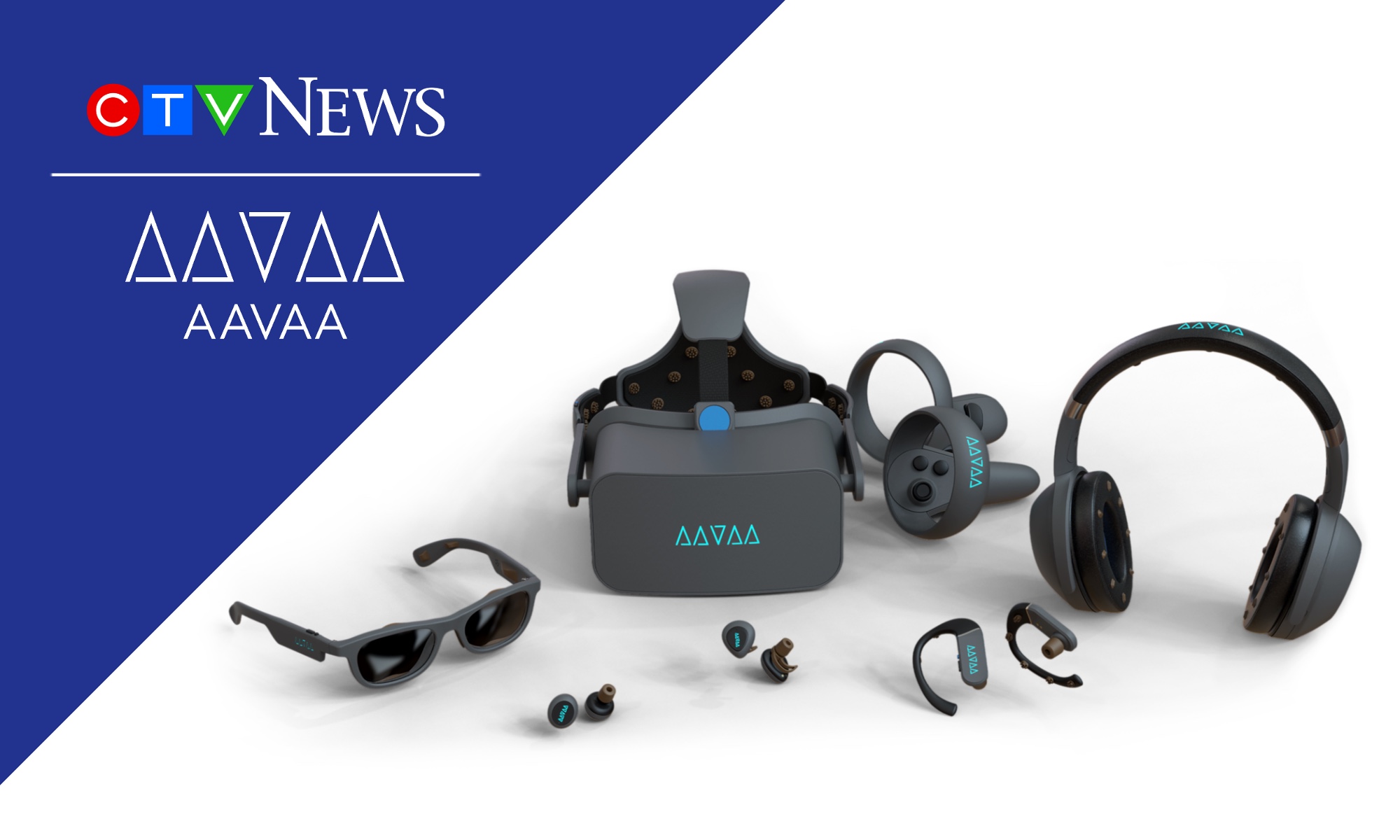By Mitchell Consky
CTVNews.ca│Toronto, September 2023
With technological advancements in voice command programs, such as Amazon’s Alexa, Google Assistant and Apple Siri, it’s become a new normal for people to speak into their devices to operate their home appliances and gadgets. But a Canadian technology start-up is working on remoting devices without users needing to do anything at all.
AAVAA, a Montreal-based computer and electronics manufacturing company, says it has built a headset that translates brain and bio-signals into commands for devices, enabling various appliances to understand the needs of a user without any physical or vocal prompts.
“We are building brain computing interfaces,” Aavaa CTO and founder Naeem Komeilipoor told CTVNews.ca. “This technology can understand the attention and intent of users. It tracks their head movement, eye movement, facial gestures like blinking or clenching, and uses this as an input to control their devices.”
Komeilipoor, a neuroscientist who previously worked at the University of Montreal, says Aavaa devices, including earpieces, glasses and headsets, allow people to operate home appliances simply by moving their eyes.
Yet, beyond the seemingly-telekinetic ability to turn on your TV just by looking at it, Komeilipoor pointed out that this tech could have significant medical applications, such as allowing paralyzed people to steer wheelchairs, or monitoring the biometrics of intensive care patients more thoroughly.
And, he said, the devices can also help those with speech and hearing impairments.
“I grew up with grandparents who were hearing-aid users,” Komeilipoor said, standing before his display at the Hardware Tech and Founders Showcase, an exhibit in Toronto hosted by founder support organization The Journey last week.
“The problem with hearing aids is that in a noisy environment like this they often fail because they don’t know what sounds you are paying attention to.”
The concept Komeilipoor is referring to is called “auditory scene analysis,” or “auditory stream segregation” — the process by which the human auditory system processes and organizes different sounds. Hearing aid technology is often able to reduce background noise, but the equipment is not yet capable of understanding the intention or attention of the listener.
To understand this, he said, “You need to monitor their brain and bio signals, or their head movement, eye movement.”
Through attention tracking, speech enhancement and wearable sensors, AAVAA’s devices are an attempt to tap into cognitive processes that have remained beyond the reach of computers, he said.
“Until now, it has been us trying to make machines understand us. With this type of technology, machines could easily understand our intention and provide service for us.”
Sources
Consky, Mitchell. ¨With the ability to track facial gestures, this headset gives the appearance of being able to read a user’s mind. ¨ CTVNews.ca 21/09/2023. ctvnews.ca/mobile/sci-tech/with-the-ability-to-track-facial-gestures-this-headset-gives-the-appearance-of-being-able-to-read-a-user-s-mind-1.6571744
